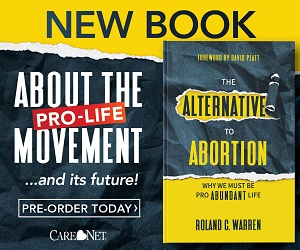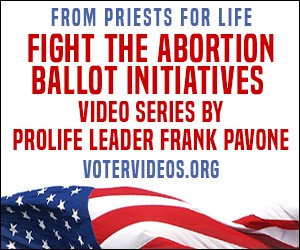NRL Political Director Karen Cross summed up beautifully the importance of Ohio’s “Issue 1” in four sentences:
Voting Yes on Issue 1 is vitally important to stopping pro-abortion groups from enshrining unlimited abortion in the Ohio state constitution. … In 2023, pro-abortion groups have their eyes fixed on Ohio. They are trying to circumvent the legislative process and use a ballot initiative to add unlimited abortion as a “right” guaranteed by the Ohio state constitution. A pro-abortion win in Ohio could have ripple effects across the country.
Please read Karen’s thoughtful and insightful story.
I’d also like to crib from a piece written by National Review Online’s John McCormack: “Poll: Ohio’s ‘Issue 1’ a Dead Heat” which you read here.
Ohio voters head to the polls this coming Tuesday, August 8, to vote on “Issue 1”—whether to raise the threshold to change the state constitution via ballot initiative from the current simple-majority requirement to 60 percent of votes cast.
The imminent significance of the August vote is a deceptively framed ballot measure to be decided in November. In that upcoming election, the vote will determine whether Ohio will add a radical pro-abortion amendment to the state’s constitution.
A tough row to hoe because the abortion lobby is spending gazillions of dollars. Mr. McCormack, however, cites a new poll by Ohio Northern University that “shows the race to be a dead heat.” “Among the 675 polled registered voters, 42.4% approve of Issue 1, while 41% disapprove.”
REACH PRO-LIFE PEOPLE WORLDWIDE! Advertise with LifeNews to reach hundreds of thousands of pro-life readers every week. Contact us today.
McCormack writes,
While opponents of Issue 1 argue it would be unfair to raise the threshold before the vote on the abortion amendment, supporters of Issue 1 argue that the abortion amendment is a prime example of why it should require greater consensus to rewrite the constitution via ballot initiatives. As a National Review editorial recently observed, “the proposed amendment is extreme in ways the average voter would not know simply
For example, the public opposes taxpayer funding of abortion, which is, of course, why the amendment does not say explicitly anything about taxpayer funding of abortion on demand. “But it is written in a lawyerly way to ensure that courts would invalidate Ohio’s version of the Hyde amendment because that long-standing popular limit on taxpayer funding of elective abortion would ‘directly or indirectly’ . . . interfere with or discriminate” against abortion,” McCormack writes.
Likewise with Ohio’s parental consent law which also would be struck down.
McCormack further writes that
The average Ohioan would get the wrong impression by reading the text of the ballot measure that the amendment would allow meaningful limits on late-term abortion. The text of the amendment explicitly states that “abortion may be prohibited after fetal viability.” But — and these are two very big buts — it also says (1) that physicians may determine viability on a “case-by-case basis,” and (2) that there is a right to abortion after viability until birth to protect “health” that is not limited to physical health. When a baby is clearly viable, threats to a mother’s physical health can be treated in minutes or hours by delivering a live baby, while a late-term abortion procedure takes days. So that provision is surely designed to enshrine a right to abortion until birth to protect mental health.
Something this extreme, you would expect, would be thoroughly vetted by the media, right?
Where is the debate and deliberation about what Ohio’s abortion amendment really means? It’s practically nonexistent. The mainstream media are more than happy to parrot Planned Parenthood’s talking points.
McCormack ends by going back to the editorial, “The hidden radicalism of Ohio’s abortion amendment” which makes many important points. For instance it notes that
Ohio is unusual in that it currently allows constitutional amendments to be passed with a simple majority. In the 50 states, 32 do not allow outside groups to propose constitutional amendments, and half of the remaining 18 have greater requirements than a single simple-majority vote. On August 8, Ohioans will vote on whether to raise the threshold to 60 percent, which would put Ohio in line with Florida.
Next Tuesday, many Ohioans may (unknowingly) be voting for what the Abortion Industry can only dream about. If you have friends or relatives who live in Ohio, be sure to encourage them to vote “Yes” on “Issue 1.”
LifeNews.com Note: Dave Andrusko is the editor of National Right to Life News and an author and editor of several books on abortion topics. This post originally appeared in at National Right to Life News Today —- an online column on pro-life issues.








